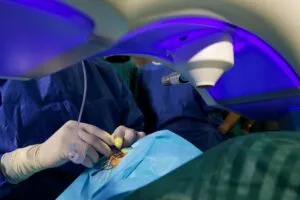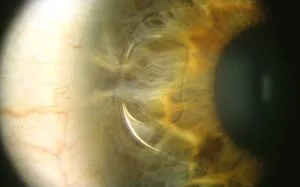Eye diseases
Myopia

Myopia is a refraction defect that leads to poor visual acuity of objects located at long distances. This is because sunlight entering the eye focuses in front of the retina instead of on it, which is required to see clearly, thus causing blurriness.
If you have this problem, it might be because your eye is longer or larger than usual, or because the cornea is overly curved, which means the focal length of the lens will be too short.
In cases of high myopia, which is above 6-8 dioptres, the elongation of the eyeball means that the inner layers of the eye are stretched and weakened. This can lead to different types of complication, so it is important to regularly see the ophthalmologist to closely control the evolution of your myopia and check your eye health.
Symptoms
If you have myopia, you will notice that you see objects closest to you more clearly, whereas those further away will be blurry (e.g. traffic signs, shop signs, bus numbers or the faces of people walking down the street).
As a result, you might squint in an attempt to see better and, as a result of ocular overstrain, could experience frequent headaches or dizziness.
Myopia often increases in children and adolescents, and tends to normally stabilise and no longer worsen at the age of around 20.



